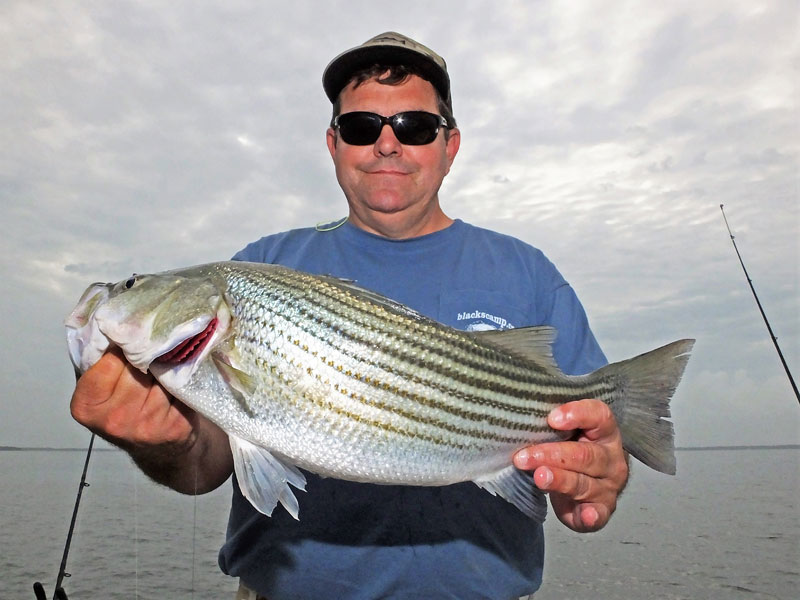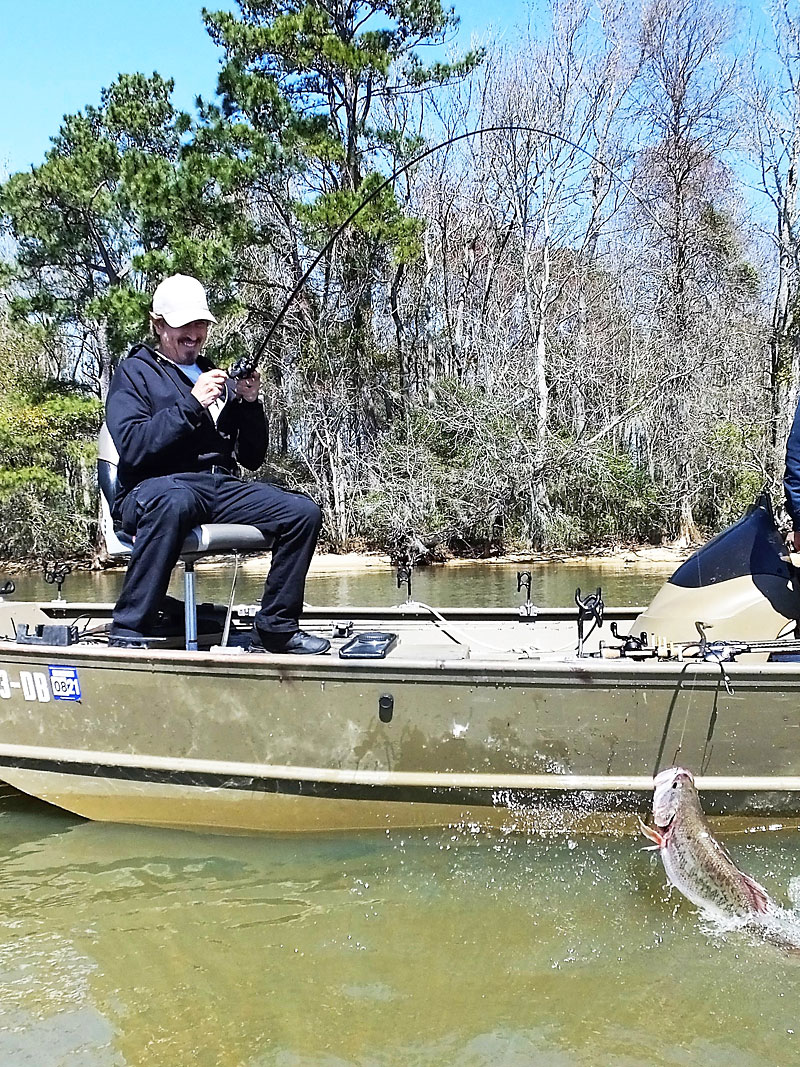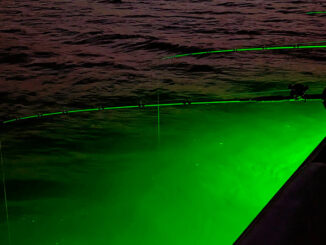
It’s trophy time at Santee Cooper lakes
Important fishing decisions this month on the Santee Cooper lakes are less about whether the fishing action is good, but selecting which of the highly productive opportunities you’ll most enjoy.
Trophy catfish, big stripers and chunky largemouth are all excellent choices. And the common denominator to making good catches is to follow the forage.
Sizzling Stripers
The striper action continues to be outstanding in December. And the schooling action is often explosive.
Kevin Davis, owner of Blacks Camp on the Diversion Canal between Lake Moultrie and Lake Marion, said striper action is hot, with much of the action still on topwater.
“December typically produces some of the most-consistent striper action of the year,” he said. “Early morning and late evening are typically best. But it’s not unusual to find topwater action any time of the day. When we have cloudy weather, the topwater action can be sizzling hot.”
Davis (843-312-3080) said multiple lures work well on schooling stripers, including topwater lures, white bucktails, spoons of various varieties and swimming minnow lures. He recommends using different lures until you hit the best pattern.
“One of my favorite lures is the Striper Wacker, a custom-made bucktail and trailer developed by retired guide Frank Drose,” Davis said.
“Drifting live bait is also highly productive when the fish are schooling, and down-lines fished at 10 to 12 feet deep and free-lines fished shallow behind the boat are excellent tactics.”
Later in the month, stripers may get on a deeper pattern. And if menhaden flood into the lake, stripers will feed heavily on them.
“Fish live bait over the menhaden schools, and you’ll likely catch both big stripers and catfish,” Davis said.
Big, deep catfish
December is consistently productive for quality and quantity catfish, and guide Charles “Capt. Kingfish” King said fishing deep water is important.
“Deep water is my key to big catfish during December,” he said. “Both lakes are productive, but my preference is Lake Moultrie, because this lake has a lot of deep water. And by deep water, I mean fish may be as deep as 50 to 60 feet deep.”

King (843-296-1083) said baitfish presence is a big factor when determining which deepwater area will produce the best action on the Santee Cooper lakes.
“Locating baitfish using your graph is important, because catfish are going to be around some sort of food. A lot of, but not all, shad are in deep water by December,” he said. “My bait choices include cut herring, perch and mullet. Mullet is often my favorite during December; it can be found at bait shops around the lake.”
King said drift-fishing is his preferred method in December, and he tries to keep his drift speed at around 0.5 miles per hour. He uses the standard Santee rig and varies the size of his bait daily to determine what the catfish prefer on that specific day.
“The weather can be cold and windy during December, but those are often great days to catch lots of fish,” King said. “Be aware and prepare for those conditions when you go. That’s why I have a fully enclosed section of my pontoon boat with a heater. The tough weather days can produce really productive fishing.”
King said he rates the mid-November through December fishing as above average.
“November and December certainly are two of the best months to catch really big catfish,” he said.
Busting Big Bass
Bass fishing is excellent during December, and James Ramsey from North Charleston, S.C., said it’s a great time to enjoy quality and quantity bass fishing.
“It’s not unusual to find a localized hotspot and catch a bunch of bass in short order, but it’s also an excellent time to hook a big fish,” he said.
“Most of the bass I catch are taken in the 4- to 6-foot depth range,” Ramsey said. “I’ve found they’ll be found in clusters, and I may fish a stretch with little action, then find several in a localized area. The trick is to determine the productive pattern and then fish that pattern the rest of the day. But understand, the pattern will likely change by the following day as the forage moves.
“Crankbaits and swimbaits are excellent, especially shad-colored patterns,” he said. “Slow-rolling spinnerbaits around woody cover is effective, and I love fishing plastic worms, but I downsize to short, 3- or 4-inch worms.”
“Riprap areas are productive, but look for irregularities such as depth changes at the base of the rocks or where big rocks and smaller rocks merge as key factors,” Ramsey said. “These small areas can hold multiple bass.
“Big bass are certainly in play,” he said. “It’s not like the spring, but they’ve been feasting on shad all fall and are typically fat and feisty.”





Be the first to comment